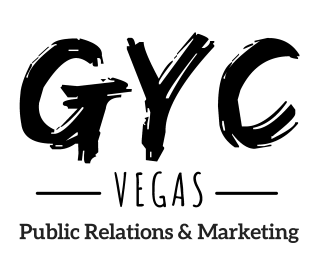As the world of PR evolves, a few of the same trends continue to reappear in everyday business operations. In this blog, we’ll dissect a few of these marketing currents are affecting business and public relations in Las Vegas. Here are five public relations trends to watch as we enter the second half of 2018.
Trend One: It’s all about content and the data that supports it.
Just a decade or two ago, public relations and marketing had to incorporate extensive customer surveys, industry experience, as well as a little guesswork to figure out what target audiences looked like and what they wanted. It was often difficult to tie sales directly to public relations efforts because the connections were often unclear and the data was difficult to obtain.
Technology has changed all that. Each and every day, it becomes easier and easier to paint a more accurate picture of who is buying your product, when is the most likely time for a purchase, and what demand might look like in a day, a week or a month. As a result, public relations professionals should be able to tailor content to that data and, therefore, directly to your customer. Give a couple of exampes of content.
Trend Two: Earned media is getting harder to earn.
Paid media including banner ads, pop-up ads, commercials, printed ads, billboards and paid broadcast spots are getting easier to skip and ignore. There’s too much information out there and everyone is blocking ads they simply don’t want to see. On the other hand, earned media and contributed content, when done effectively, can help pique interest, drive traffic and increase sales for companies.
As traditional newspapers, magazines and other media outlets continue to tighten their belts, you’ll see more niche publications, website and blogs rising up to fill information needs. Gone are the days of sending out mass news releases in hopes of catching a few publications. Today, earned media is harder to capture, and many outlets are happy to accept contributed content. So, when you succeed with earned media, or you’re able to write and secure contributed content with notable targeted media outlets, it can help to build credible exposure and bring awareness to your organization.
Trend Three: Thought leadership will come from throughout the organization.
Many years ago, key executives like CEOs and COOs served as the spokespeople of companies. Occasionally, a technical person might speak for a company in a trade publication. Today, however, many employees are so specialized and much of that talent can be tapped not only on the business side but on the public relations side as well. Therefore, it’s important to train employees in many different sectors of your organization to become advocates and media representatives.
Trend Four: Public relations specialties will become even more diverse than they have been conventionally.
Those who have worked in public relations know that there have always been many areas of specialty in the field, including employee (internal) communications, media relations, crisis communications, investor relations and special events. Now, public relations is beginning to reach even further to include aspects of SEO optimization, artificial intelligence and data analytics. Establishing a network with varied expertise will be key to a successful overall public relations campaign.
Trend Five: What used to be insignificant public influence is now significant.
We’re all aware of how quickly news can spread over social media. However, it’s not as easy to see how text messages, e-mails and other video communication can influence public opinion. Although these communications means have been minor in the past, the speed of technology can make them a major influence into the future. Gaining data and understanding in these areas will be important.
If you need help with public relations in Las Vegas, contact Gina Yager Creative. Our firm brings years of experience in many industries and practice areas to help address your public relations and marketing needs.

